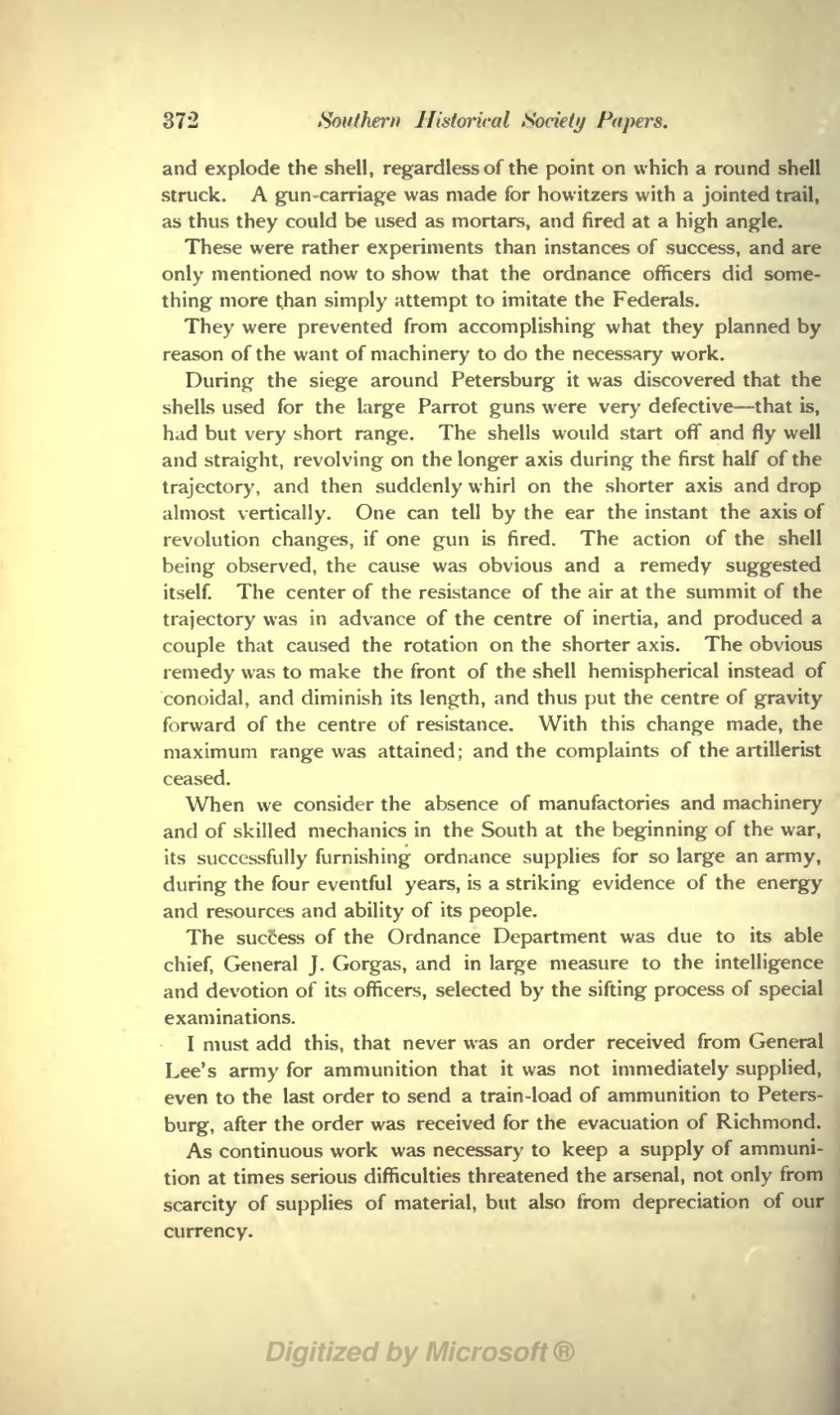372 Southern Historlrnl No<vV///
and explode the shell, regardless of the point on which a round shell struck. A gun-carriage was made for howitzers with a jointed trail, as thus they could be used as mortars, and fired at a high angle.
These were rather experiments than instances of success, and are only mentioned now to show that the ordnance officers did some- thing more than simply attempt to imitate the Federals.
They were prevented from accomplishing what they planned by reason of the want of machinery to do the necessary work.
During the siege around Petersburg it was discovered that the shells used for the large Parrot guns were very defective that is, had but very short range. The shells would start off and fly well and straight, revolving on the longer axis during the first half of the trajectory, and then suddenly whirl on the shorter axis and drop almost vertically. One can tell by the ear the instant the axis of revolution changes, if one gun is fired. The action of the shell being observed, the cause was obvious and a remedy suggested itself. The center of the resistance of the air at the summit of the trajectory was in advance of the centre of inertia, and produced a couple that caused the rotation on the shorter axis. The obvious remedy was to make the front of the shell hemispherical instead of conoidal, and diminish its length, and thus put the centre of gravity forward of the centre of resistance. With this change made, the maximum range was attained; and the complaints of the artillerist ceased.
When we consider the absence of manufactories and machinery and of skilled mechanics in the South at the beginning of the war, its successfully furnishing ordnance supplies for so large an army, during the four eventful years, is a striking evidence of the energy and resources and ability of its people.
The success of the Ordnance Department was due to its able chief, General J. Gorgas, and in large measure to the intelligence and devotion of its officers, selected by the sifting process of special examinations.
I must add this, that never was an order received from General Lee's army for ammunition that it was not immediately supplied, even to the last order to send a train-load of ammunition to Peters- burg, after the order was received for the evacuation of Richmond.
As continuous work was necessary to keep a supply of ammuni- tion at times serious difficulties threatened the arsenal, not only from scarcity of supplies of material, but also from depreciation of our currency.
